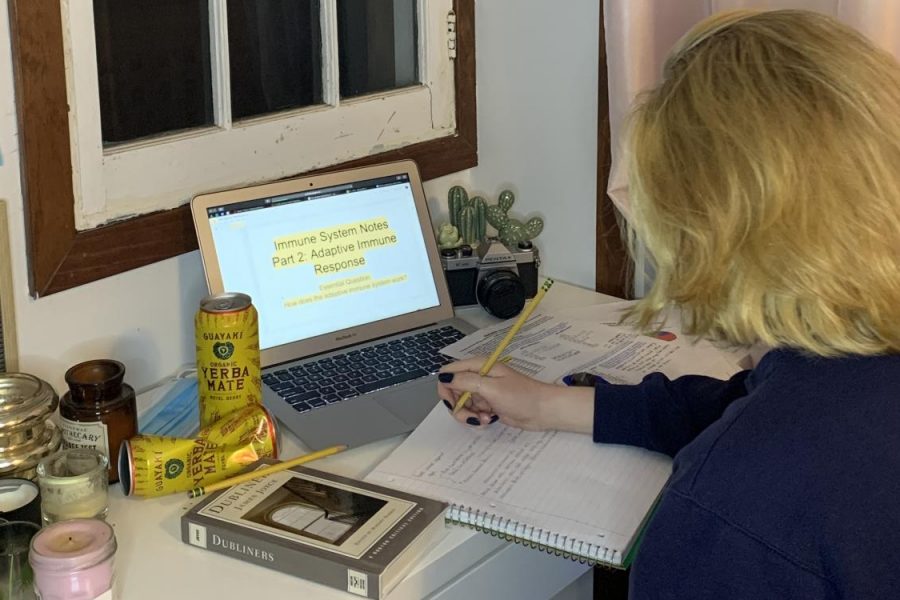Editorial: The emotional impact of distance learning
Feb 6, 2021
To state the obvious: distance learning is a sorry substitute for in-person instruction. Lesson plans have been stripped of engaging activities and assignments, student fail rates have spiked district-wide, and teachers are regularly lecturing to a mosaic of silent black rectangles. However, in addition to its commonly cited academic pitfalls, the student body seems to be experiencing emotional distress at the hands of at-home education.
Many students have expressed feeling extremely unmotivated going into their third semester in distance learning. Sports, school-wide events such as rallies and dances, and the small moments of everyday interaction with peers and teachers have been divorced from the school experience. All students have left to focus on are Zoom lectures, homework, standardized tests, and for seniors, college applications. Without any typical highlights, the school day feels increasingly monotonous and isolated.
Worse, the line between school and free time has been blurred by distance learning. It’s exhausting to spend hours each day on the computer only to continue working on homework in the same room, in the same chair, looking at the same blue screen for hours afterward. As a result, many students are experiencing headaches, insomnia, and eye strain. Some have even reported turning to drugs and alcohol more frequently.
Many are only compelled to keep pushing forward by hope for a potential return to campus. However, the dozens of reneged return dates from the district have cast serious doubt on that prospect and depleted overall morale.
Of course, none of these complaints compare to the bigger losses many have suffered during this time including unemployment, sickness, or the death of a loved one. However, they are compounding these traumatizing experiences.
Given all this, students are desperate to find ways to improve the distance learning experience beyond cliche self-care advice.
Here are The Tam News’ recommendations:
- Don’t operate as if things are normal. Both teachers and students can benefit from acknowledging the trying conditions we’re experiencing and lowering expectations to match them. You may not be operating at 100%. That’s okay. Take care of your physical and emotional self before ruminating on personal goals. In addition, we encourage teachers to alter late work and extension policies to be more generous wherever possible. Distance education simply isn’t the same quality as in-person instruction and current assignments should acknowledge that distinction. This isn’t a reflection on teachers’ instructional abilities, but rather the emotional and physical impediments students are facing right now.
- Minimize camera guilt/stress. Having your camera on during class can create a more engaging virtual environment and force you to focus. And it can be especially helpful for teachers who need student feedback to ensure they’re effectively conveying concepts/ideas. So if you’re feeling up to it, turn it on. However, don’t feel guilty if you don’t want to showcase your home environment or if sometimes you just don’t want to stare back at yourself for another hour and 15 minutes. (You can turn off self-view in the video settings tab). There are other ways to participate in class including using the chat feature or unmuting yourself.
- District and Tam administration, don’t over-promise. Be honest about the chances of us returning to school this year and what that experience might be like. We understand you’re operating with limited and regularly changing information. However, students are easily excited hearing about the next return date, but become just as, if not more, disappointed, when that date is inevitably pushed back/canceled. So if it’s looking like hybrid learning just isn’t possible this year, let us know right away, and don’t build up false hope. We would much prefer you try to make distance learning more enjoyable than waste time and energy putting together unusable hybrid plans.




